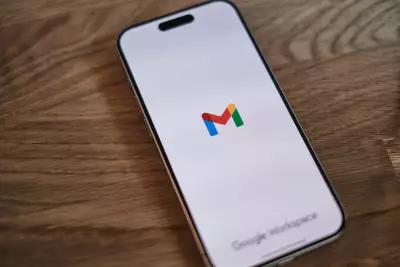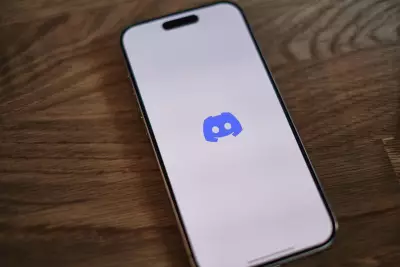What You Need to Know about the Gmail Data Breach
Table of Contents
- Published: Oct 31, 2025
- Last Updated: Oct 31, 2025
As the foremost email storage and communications platform, Gmail’s free web-based services have penetrated every market and niche. Billions of people and organized groups depend on the company to provide email storage, organization, and integration. Considering its core importance within almost everyone’s life, there is a high anticipation that its security measures are of the highest caliber. Unfortunately, the corporation was recently the victim of a data breach.
The breach checker, ‘Have I been Pwned’, added a newly uncovered dataset with an estimated 183 million unique email addresses and passwords. According to available reports, the leaked data entailed stealer logs and credential stuffing lists. He also confirmed that this data can be searched by email, password, and domain.
Early analysis also shows the data set was gathered over time through infostealer malware. Although Google claims its systems were not directly affected by the breach, the size of the incident raises concerns about how easily stolen passwords may be traded through other parties.
When Was the Gmail Data Breach?
On October 21, 2025, Troy Hunt exposed a dataset of 183 million Gmail addresses and passwords to his breach notification platform. The threat analysis firm, Synthient, compiled the 3.5 terabyte dataset. Google also reiterated that reports of a breach were false. The company also stated that the online data originated from a misunderstanding of infostealer databases.
How to Check If Your Data Was Breached
Sometimes, the notification process following data breaches can take a considerable amount of time, especially if the incident affects millions of people. Google has yet to confirm the incident, let alone notify the affected Gmail users. Given the scope of the breach, it would be advisable to be proactive and see if you were one of those affected. There are reputable third-party sites that can help individuals verify whether their personal information has been exposed.
Aside from these sites, interested parties can check their financial statements over the course of months or a year. Any suspicious transactions could be a clue to fraud or identity theft. In many cases, you only need to enter your name, email address, and date of birth to assess if your information was compromised. It is essential to verify the reliability of these platforms before sharing personal information with them.
What to Do If Your Data Was Breached
If it becomes apparent that your information was compromised in the Gmail data security incident, we advise you to take immediate action to secure your financial and social accounts.
For an in-depth review, you may have to subscribe to annual identity protection and monitoring from the main credit bureaus.
If you identify potential fraud or identity theft, report the matter to the relevant authorities immediately. Secondly, initiate multifactor authentication on all Google accounts. It adds a vital second layer of protection, making brute-force account hacking hard to implement.
Multifactor authentication should apply to all online accounts after changing their passwords, especially if you were personally affected by the Gmail data breach. Google offers a password checkup tool that reviews saved passwords to ascertain their security level.
Are there any lawsuits because of the Data Breach?
No lawsuit has been filed against Google yet regarding the data breach. Google has also explicitly denied the incident, saying its users remain protected. They maintain that the issue comes from criminals collecting credentials that users entered on other compromised platforms.
Despite its position on the October breach, Google is dealing with a federal case in which it was ordered to pay $425 million in a class-action lawsuit. In Rodriguez v. Google LLC, the plaintiff demonstrated that Google continued to collect user information from non-related Google applications even after users had turned off their web access.
Can my Gmail information be used for identity theft?
The data exposed in the Gmail data could be used for identity theft. Though Google claims its systems were not breached, the stolen credential makes the affected individuals vulnerable to identity theft. Criminals may use this information and access other online accounts where you used the same credentials.
Once they are inside the email, resetting the passwords and locking you out is also easier. That provides enough opportunity to intercept sensitive communications and gather enough information to steal your identity. The risk is high because emails serve as a hub for communication and identity coordination.
What Can You Do to Protect Yourself Online?
It pays to stay ahead of the curve and secure your online accounts. An email breach can expose you to identity theft, hence the need to exercise caution. The following are ways you can protect yourself online and reduce personal risks:
- Enable two-factor authentication: Enabling multiple-factor authentication on your online accounts adds an extra layer of protection by sending a prompt when someone tries to access them. This reduces the risk of unauthorized access.
- Change the passwords on all Google accounts: Given the nature of this breach, anyone affected should change the credentials on both the main and recovery Google accounts. This also goes for social media or academic accounts that utilize similar credentials. Use strong passwords with a unique mix of characters and save them using a manager.
- Monitor your financial accounts: Check for any unauthorized transactions on financial statements dating back to the past year. Consider using credit-monitoring services and placing fraud alerts or credit freezes on your credit reports.
- Avoid Public Wi-Fi: Do not access the internet on personal devices using public Wi-Fi. You are more likely to fall victim to malware if you do this.
- Be vigilant against Phishing attempts: Threat actors can use stolen information to impersonate company officials to access more information. Avoid downloading attachments from unverified sources.














